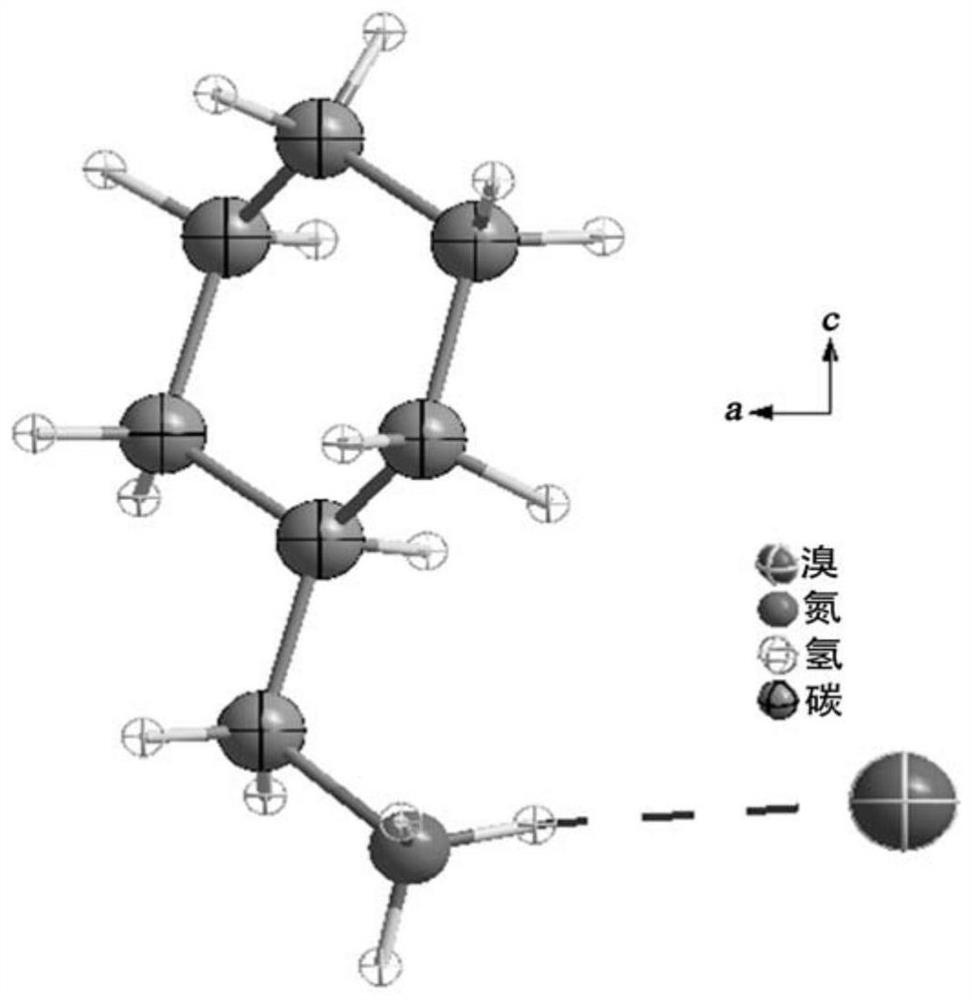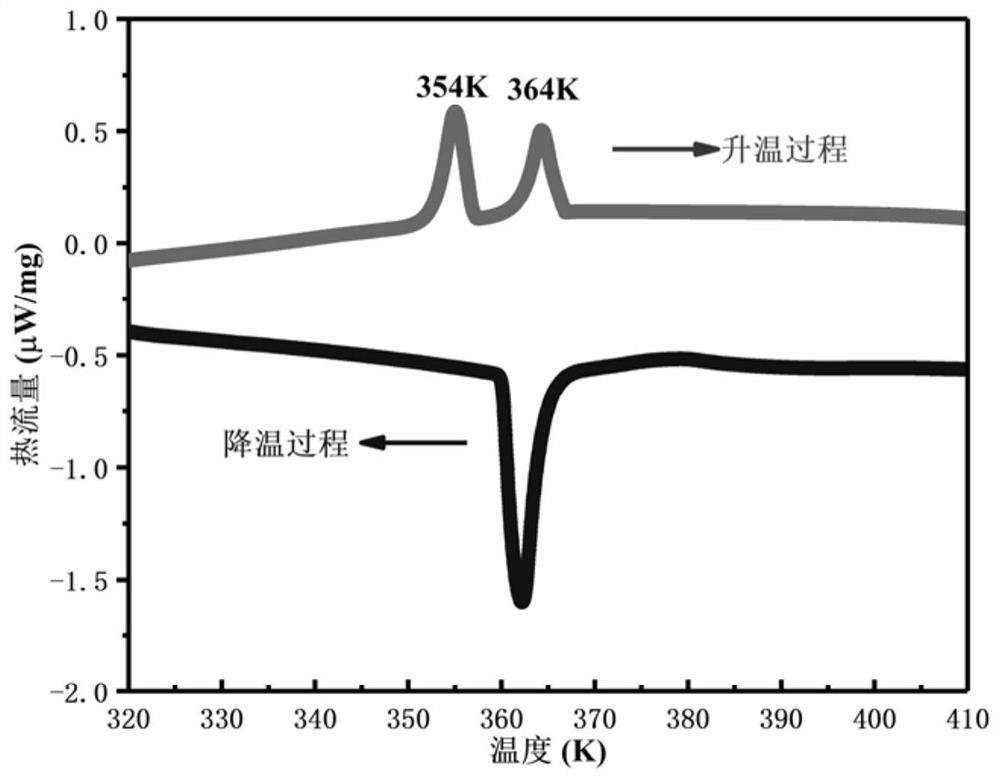Organic molecule-based antiferroelectric material, preparation method and application thereof
A technology of antiferroelectrics and organic molecules, applied in the field of preparation of organic molecule-based antiferroelectric materials, can solve the problems of restricting development, high temperature sintering, phase separation and precipitation, etc.
- Summary
- Abstract
- Description
- Claims
- Application Information
AI Technical Summary
Problems solved by technology
Method used
Image
Examples
Embodiment 1
[0031] The preparation method of an organic molecular-based antiferroelectric material comprises the following steps: at room temperature, cyclohexylmethylamine is dropped into hydrobromic acid according to a stoichiometric ratio of 1:1, heated to 80°C, and then stirred until dissolved A clear solution is formed, and then the resulting solution is placed in an 80°C thermostat and slowly dropped to 30°C to obtain the organic molecule-based antiferroelectric material, namely cyclohexylmethylamine bromide, with a yield of 95%, its structure diagram is as follows figure 1 , 2 The shown organic molecule-based antiferroelectric material is an orthorhombic Pbca space group at room temperature, and the unit cell parameters are a=8.1818(2), b=7.9363(3), Z=8,
[0032] When the temperature rises to 354K, it transforms into a ferroelectric phase, the tetragonal P4mm space group, and the unit cell parameters are
[0033] When the temperature rises above 364K, it turns into a pa...
Embodiment 2
[0035] The preparation method of an organic molecular-based antiferroelectric material comprises the following steps: at room temperature, cyclohexylmethylamine is dropped into hydrobromic acid according to a stoichiometric ratio of 1:1, heated to 60° C., and then stirred until dissolved A clear solution is formed, and then the resulting solution is placed in an incubator at 80°C and slowly lowered to 40°C to obtain the orthorhombic Pbca space group of the organic molecule-based antiferroelectric material at room temperature, The unit cell parameters are a=8.1818(2), b=7.9363(3), Z=8,
[0036] When the temperature rises to 354K, it transforms into a ferroelectric phase, the tetragonal P4mm space group, and the unit cell parameters are
[0037] When the temperature rises above 364K, it turns into a paraelectric phase, the space group changes to P4 / nmm, and the unit cell parameters are
Embodiment 3
[0039] The preparation method of an organic molecular-based antiferroelectric material comprises the following steps: at room temperature, cyclohexylmethylamine is dropped into hydrobromic acid according to a stoichiometric ratio of 1:1, heated to 100° C., and then stirred until dissolved A clear solution is formed, and then the resulting solution is placed in an incubator at 80°C and slowly lowered to 45°C to obtain the orthorhombic Pbca space group of the organic molecule-based antiferroelectric material at room temperature, The unit cell parameters are a=8.1818(2), b=7.9363(3), Z=8,
[0040] When the temperature rises to 354K, it transforms into a ferroelectric phase, the tetragonal P4mm space group, and the unit cell parameters are
[0041] When the temperature rises above 364K, it turns into a paraelectric phase, the space group changes to P4 / nmm, and the unit cell parameters are
[0042] Application of the organic molecular antiferroelectric crystal material...
PUM
 Login to View More
Login to View More Abstract
Description
Claims
Application Information
 Login to View More
Login to View More - R&D
- Intellectual Property
- Life Sciences
- Materials
- Tech Scout
- Unparalleled Data Quality
- Higher Quality Content
- 60% Fewer Hallucinations
Browse by: Latest US Patents, China's latest patents, Technical Efficacy Thesaurus, Application Domain, Technology Topic, Popular Technical Reports.
© 2025 PatSnap. All rights reserved.Legal|Privacy policy|Modern Slavery Act Transparency Statement|Sitemap|About US| Contact US: help@patsnap.com



